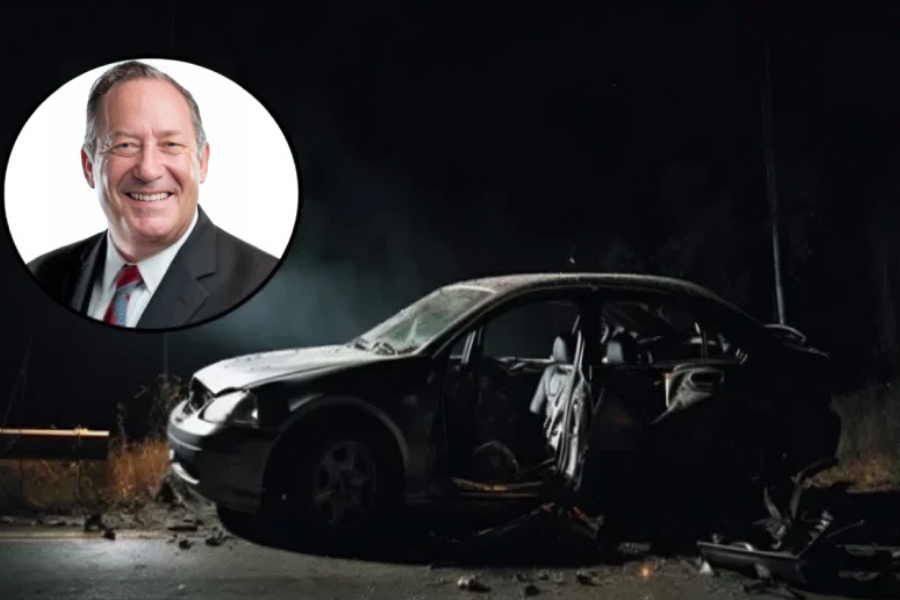Raymond Urbanski Car Accident in Nova Scotia: A Call for Enhanced Road Safety
Introduction
The car accident involving Raymond Urbanski in Nova Scotia has left a profound impact on the local community, underscoring the critical importance of road safety and the strength of communal support during times of crisis. This tragic incident serves as a stark reminder of life’s fragility and the lasting consequences of a single moment on the road. In examining the details of the Raymond Urbanski car accident and its aftermath, it is essential to understand the context and impact of this event on the individuals involved, their families, and the wider community.
Details of Raymond Urbanski Car Accident in Nova Scotia
On the evening of August 15th, 2024, a catastrophic collision occurred at the intersection of Main Street and Elm Avenue in Nova Scotia, marking a dark moment in the community’s history. Around 9:30 PM, Raymond Urbanski, a cherished figure in the area, was driving his silver Honda Civic westbound on Main Street when he collided with a red Dodge Ram pickup truck driven by Jennifer Adams. The force of the impact was immense, causing Urbanski’s vehicle to veer off the road and crash violently into a nearby tree. He sustained life-threatening injuries from the collision, prompting emergency services to rush him to the nearest hospital for urgent medical care.
Investigation and Findings
In the aftermath of the accident, both the Nova Scotia Police Department and the Wilmington Police Department launched a thorough investigation into the circumstances surrounding the crash. Preliminary findings suggested that multiple factors contributed to the incident, including adverse weather conditions, hazardous road conditions, and a malfunctioning traffic signal. Notably, the traffic signal at the intersection had been displaying a green light for an extended period, which could have created confusion among drivers approaching the intersection.
As investigators delved deeper into the circumstances leading up to the collision, they also examined potential mechanical issues with Urbanski’s vehicle and scrutinized the overall road safety measures in place at that time. The investigation aimed not only to determine the cause of the accident but also to prevent similar tragedies from occurring in the future.
Community Response
The news of Raymond Urbanski’s accident reverberated through the close-knit community of Nova Scotia, sending shockwaves among residents. Urbanski was well-known for his kindness, generosity, and active participation in local events, and his sudden absence left a significant void in the community. In the wake of this tragedy, residents came together to support the Urbanski family during their difficult time. Various fundraisers were organized to help cover medical expenses and provide financial assistance, while local businesses and residents expressed their condolences and support in numerous ways.
A candlelight vigil was held in honor of Raymond, with hundreds of people gathering to pay their respects and share memories of his positive impact on their lives. Local officials, including Wilmington’s mayor, Timothy Ross, released public statements expressing their deepest sympathies and pledging their support to the family. This collective response highlighted the community’s resilience and the strong bonds among its members.
Road Safety Initiatives
The tragic accident involving Raymond Urbanski served as a catalyst for renewed focus on road safety in Nova Scotia. In the wake of this heartbreaking event, various programs and initiatives were launched to educate drivers about the dangers of the road and the importance of responsible driving practices.
Local schools introduced road safety education programs aimed at teaching students about traffic signs, pedestrian safety, and the consequences of reckless driving. Meanwhile, mechanics in the area offered free safety inspections and provided educational resources on basic vehicle maintenance, aiming to prevent accidents caused by mechanical failures.
In addition, lawmakers proposed stricter penalties for traffic violations, particularly for offenses such as failing to yield and distracted driving. A task force was also established to review existing road safety protocols and recommend enhancements to improve the overall safety of the community’s roads. The initiatives launched in response to the accident exemplify the community’s commitment to preventing future tragedies.
| Initiative | Description |
| Road Safety Education Programs | Local schools introduced programs to teach students about road safety |
| Free Safety Inspections | Mechanics offered free vehicle inspections and maintenance education |
| Stricter Traffic Violation Penalties | Lawmakers proposed harsher penalties for traffic offenses |
| Road Safety Task Force | Formation of a task force to review and enhance road safety protocols |
Impact on Public Health and Safety
The tragic accident involving Raymond Urbanski underscores the broader implications of such incidents on public health and safety. Severe trauma resulting from car accidents or other catastrophic events presents a significant burden on healthcare systems and communities worldwide.
The sixth edition of the European guideline on the management of major bleeding and coagulopathy following trauma emphasizes the critical role of immediate detection and management of traumatic injuries to enhance patient outcomes. The guideline offers comprehensive recommendations for clinicians treating bleeding trauma patients, highlighting the necessity of timely intervention in preventing exsanguination and other life-threatening complications.
Trauma Management Guideline Key Points
- European Guideline: The sixth edition focuses on the management of major bleeding and coagulopathy.
- Immediate Detection: Early identification of traumatic injuries is crucial for improved outcomes.
- Comprehensive Recommendations: The guideline provides structured recommendations for clinicians treating trauma.
- Prevention of Exsanguination: Prioritizing measures to optimize resources for bleeding control is essential.
Conclusion
The car accident involving Raymond Urbanski in Nova Scotia serves as a poignant reminder of the profound impact that a single moment can have on a community. The outpouring of support and the swift actions taken in the aftermath of the tragedy exemplify the resilience and unity of the people of Nova Scotia.
As we reflect on the life of Raymond Urbanski and the lessons learned from this incident, it is evident that continued efforts in road safety education, community support, and trauma management are essential to preventing future accidents and ensuring the well-being of all community members. By working together to prioritize safety, compassion, and understanding, we can honor Raymond’s legacy and create a safer environment for generations to come.
Through community engagement and a commitment to education and awareness, the tragic events surrounding Raymond Urbanski’s accident can lead to positive changes in road safety that will protect and preserve lives in the future.
FAQs
1. What happened in the Raymond Urbanski car accident in Nova Scotia?
On August 15th, 2024, Raymond Urbanski was involved in a serious car accident at the intersection of Main Street and Elm Avenue in Nova Scotia. His vehicle collided with a red Dodge Ram pickup truck driven by Jennifer Adams, resulting in Urbanski sustaining life-threatening injuries.
2. What were the causes of the accident?
The investigation into the accident revealed that several factors may have contributed, including poor weather conditions, hazardous road conditions, and a malfunctioning traffic signal. The traffic signal had reportedly been showing a green light for an extended period, which could have caused confusion for drivers at the intersection.
3. How did the community respond to the accident?
The accident prompted an overwhelming response from the community, as residents rallied together to support the Urbanski family. Fundraisers were organized to assist with medical expenses, and a candlelight vigil was held in Raymond’s honor, drawing hundreds of attendees who shared their memories and condolences.
4. What road safety initiatives were introduced after the accident?
In response to the accident, several road safety initiatives were implemented, including:
- Road Safety Education Programs in local schools to teach students about traffic safety.
- Free Safety Inspections offered by mechanics to ensure vehicles are safe for driving.
- Stricter Penalties for Traffic Violations proposed by lawmakers to discourage reckless driving.
- Formation of a Road Safety Task Force to review and enhance existing road safety protocols.
5. What is the impact of the accident on public health and safety?
The accident highlights the broader implications of car accidents on public health and safety, emphasizing the importance of immediate detection and management of traumatic injuries. The European guidelines for trauma management underscore the critical role of timely intervention in preventing severe complications.
6. How can the community honor Raymond Urbanski’s legacy?
The community can honor Raymond Urbanski’s legacy by continuing to promote road safety, participating in educational programs, supporting initiatives aimed at improving traffic conditions, and fostering a culture of compassion and assistance in times of crisis.
7. Where can I find more information about the accident and its aftermath?
Additional details about the Raymond Urbanski car accident in Nova Scotia and its impact can be found in local news reports, community bulletins, and through ongoing updates from the Nova Scotia Police Department.
Stay up-to-date with the latest celebrity news and gossip at Worldtimes.ltd.
Explore exclusive interviews and insights into celebrity lifestyles on sowixonline.com






